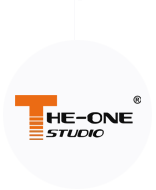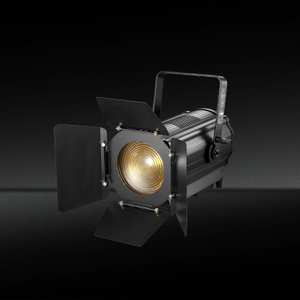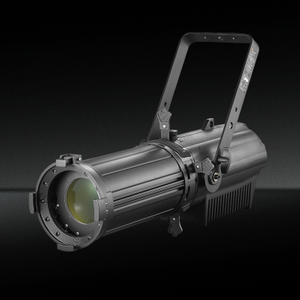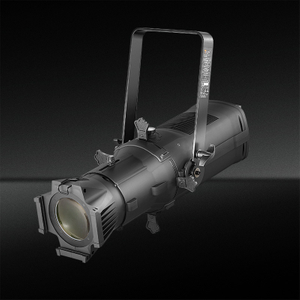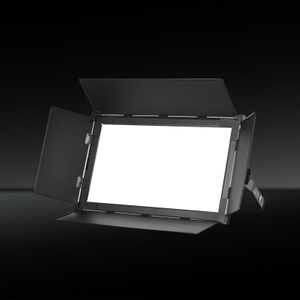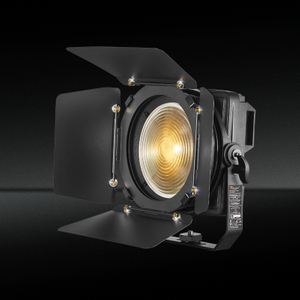Exploring The Different Types of LED Studio Lights And Their Uses
Views: 31 Author: Site Editor Publish Time: 2024-12-19 Origin: Site








In the world of photography and videography, lighting plays a crucial role in determining the quality of your work. One of the most versatile and popular lighting solutions today is the LED studio light. This article will explore the different types of LED studio lights, their unique features, and their applications, helping you understand how to choose the right lighting for your specific needs.
What Are LED Studio Lights?
LED studio lights are artificial lighting tools that use light-emitting diodes (LEDs) to produce illumination. They have gained popularity in recent years due to their efficiency, longevity, and versatility. Unlike traditional incandescent bulbs, LED lights consume less energy and have a longer lifespan, making them an excellent investment for both amateur and professional photographers and videographers.
Key Advantages of LED Studio Lights
Energy Efficiency: LEDs consume significantly less power than traditional lighting solutions, leading to lower electricity bills and a reduced environmental impact.
Longevity: With a lifespan of up to 50,000 hours or more, LED studio lights require less frequent replacement, saving you money over time.
Low Heat Output: LED lights produce minimal heat compared to incandescent bulbs, which helps keep your studio environment comfortable.
Versatility: LED studio lights come in various shapes, sizes, and color temperatures, making them suitable for different lighting scenarios.
Instant On/Off: LEDs provide full brightness instantly, without the warm-up time required by other lighting types.
Dimmable Options: Many LED lights come with dimming features, allowing you to adjust the brightness to suit your needs.
Types of LED Studio Lights
LED studio lights have revolutionized the field of photography and videography by providing efficient, versatile, and high-quality lighting solutions. Understanding the various types of LED studio lights can significantly enhance your lighting setup, whether for professional or personal use. Here, we delve into the key types of LED studio lights, their descriptions, uses, and benefits.
1. LED Panel Lights
LED panel lights are flat, rectangular fixtures designed to emit a soft and even light. These panels are typically slim and lightweight, making them an excellent choice for various photography and videography applications. Their broad light source helps to minimize harsh shadows, ensuring that the subject is evenly lit.
Uses
Key Lighting: Ideal for primary lighting setups in interviews or portrait photography, LED panels create a natural look and feel.
Fill Lighting: They are effective in softening shadows in a scene, providing balanced illumination without overwhelming brightness.
Background Lighting: Placing these panels behind subjects enhances depth and separation from the background, adding visual interest to the composition.
Benefits
Their slim design makes them highly portable and easy to set up, making them suitable for on-location shoots.
LED panel lights come in various color temperatures, including daylight and tungsten, allowing photographers to match ambient light conditions.
2. LED Ring Lights
LED ring lights are circular lighting fixtures that encircle the camera lens, providing uniform illumination around the subject. They are particularly popular among beauty and portrait photographers for their flattering effects.
Uses
Beauty Shots: Ideal for makeup artists and beauty vloggers, ring lights highlight facial features while minimizing imperfections.
Close-Up Photography: They offer soft, diffused light that works well for small subjects or intricate details, ensuring clarity without harsh shadows.
Benefits
By reducing harsh shadows and highlights, LED ring lights create a natural appearance, enhancing the overall quality of the images.
Many models come equipped with adjustable brightness and color temperature settings, allowing for further customization.
3. LED Softboxes
LED softboxes combine LED lighting with softbox modifiers to diffuse light, resulting in soft and even illumination. These lights are commonly used in studio setups for their versatility and ability to control light quality.
Uses
Portrait Photography: Softboxes produce flattering light, enhancing skin tones and minimizing blemishes, which is crucial in portraiture.
Product Photography: They help reduce reflections and highlights on shiny surfaces, making them ideal for capturing high-quality product images.
Benefits
Softboxes allow for creative control over light direction and intensity, making them essential for studio work.
Many softbox models are collapsible, making them easy to store and transport.
4. LED Fresnel Lights
LED Fresnel lights utilize a lens system to produce a focused beam of light. This versatility allows them to be used in both spot and flood lighting scenarios, making them a favorite among filmmakers and theater lighting designers.
Uses
Theatrical Lighting: Commonly employed in stage productions, Fresnel lights create dramatic effects and control over lighting angles.
Film and TV Production: Ideal for crafting depth and dimension in scenes, they help enhance the narrative through effective lighting techniques.
Benefits
Adjustable beam angles provide precise control over light spread, allowing users to tailor the light to their specific needs.
Their robust construction ensures they can withstand heavy usage in demanding environments.
5. LED Flood Lights
LED flood lights are designed to deliver broad and powerful illumination, making them suitable for large spaces or outdoor applications.
Uses
Event Lighting: Effective for concerts, festivals, and outdoor gatherings, flood lights illuminate expansive areas, ensuring visibility for audiences.
Set Lighting: They are commonly used for lighting large film sets or backdrops, providing even coverage across wide areas.
Benefits
With high lumen output, LED flood lights ensure excellent visibility in expansive settings, making them ideal for large events.
Many models are weather-resistant, allowing for safe use in outdoor environments.
6. LED Light Bars
LED light bars are elongated, narrow lights that can be mounted on stands or surfaces. Their versatility allows for a wide range of lighting effects and applications.
Uses
Accent Lighting: Light bars are perfect for highlighting specific areas or objects in a scene, adding focus and detail.
Backlighting: They are effective in creating depth by illuminating the background, enhancing the overall composition.
Benefits
Their compact design makes them easy to position in tight spaces, offering flexibility in various setups.
Available in a variety of colors, LED light bars allow for creative lighting effects and enhancements.
7. LED Tubes
LED tubes are long, cylindrical lights often utilized in studio settings. They can be positioned horizontally or vertically, providing different lighting effects depending on their orientation.
Uses
Creative Lighting: LED tubes are perfect for adding colored or patterned light to a scene, enabling unique and artistic expressions.
Ambient Lighting: They can set the mood in a studio environment, contributing to the overall atmosphere of a shoot.
Benefits
Flexible mounting options allow for various applications, whether used as primary or supplementary lighting.
Many LED tube models are battery-operated, enhancing portability and ease of use during location shoots.
Conclusion
LED studio lights are an invaluable asset in the world of photography and videography. With a variety of types available, each serving unique purposes, understanding their applications is essential for anyone looking to enhance their work. Whether you’re a seasoned professional or an enthusiastic beginner, investing in the right LED studio lights can significantly improve the quality of your images and videos.
By exploring the different types of LED studio lights and their uses, you can make informed decisions that will elevate your creative projects. As technology continues to evolve, staying updated on the latest advancements in LED lighting will further enhance your capabilities, allowing you to produce stunning visual content with ease.
